History of Anesthesia
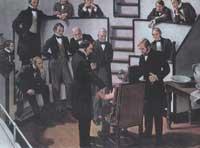
The decrease in physical pain has long been a human desire. With this objective, the first step in anesthesia for medicine is the XIX. It was carried out in the mid-twentieth century. It was a special moment. In any other field of science, the diffusion of a discovery is usually slow, and often looking for its application can be a work of decades.
Anesthesia is an exception. For example, inhaling gas ethyl ether a few years after the first successful tests was a widespread practice. From then on, it was just refining the techniques and looking for better substances, but the real revolution was already made. In these early stages, in addition, researchers tested themselves. No wonder. The operations carried out so far generated great fear for both patients and surgeons.
Years without anesthesia?
Apparently, the Homo heidelbergensis of Atapuerca did not know the anesthesia. In fact, at the site of La Sima de los Huesos died a man about 300,000 years ago with a broken and infected rod. Maybe they didn't get that tooth because they didn't know narcotic substances and, like us, they feared pain.
In later civilizations it cannot be said that sleep, loss of knowledge or, to some extent, lack of methods to reduce sensitivity were not known. Throughout history many methods have been treated and many substances have been tasted for this purpose.
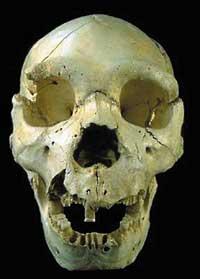
For example, those living in Mesopotamian villages were not made strange plants with similar properties. The indigenous people of South America chewed the coca plant and the parents of Egypt used the loa herb to calm the crying children. In addition to the effects of plants, many other tricks were developed to help medicine. The Assyrians, for example, tightened the carotid artery until the patient entered a coma. It was a dangerous but effective method when the patient does not die. However, as far as ancient peoples are concerned, some methods are really remarkable: opium, mandragon, hemp, perfect and alcohol.
For a long time there has been no better narcotics than fabrics impregnated with the layers of mandrakes. However, surgery was a serious problem. There is nothing more to see than what the Roman doctor Aulo Kornelio Zeltso wrote in the first century: “A surgeon should work with strong hands, not hesitate and be as skillful with the left as with the right. It should be rigorous and clear, seemingly calm and compassionate, to cure the patients it treats. In addition, their fabrics should not produce cuts faster or less than necessary.”
In medieval Europe science can be considered too late; in the field of medicine, for example, that is evident. XVI. In the 19th century, Barber surgeons walked through the streets making cures for the humble village and, of course, without using narcotics.
The era of scientific advances
XVII and XVIII. For centuries a scientific methodology was developed. This new mentality had a great reflection in many areas. Medicine, for example, advanced very quickly. Fortunately, many of the investigations carried out at this time were carried out in the 19th century. It opens its doors to the anesthesia of the nineteenth century.
In 1616 the English physician William Harvey discovered the mechanism of blood circulation. Twenty-eight years later, the Italian physicist Evangelista Torricelli invented the barometer and began to measure the pressure of gases. Consequently, it was discovered that the air is heavier on the coast than on the top of a mountain. This would later have an impact on gas research for anesthesia.
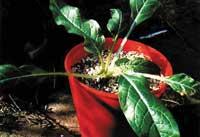
British architect Christopher Wren injected the first injection in 1656. Using a bird's pen and pork bladder, he injected wine into an animal. According to this research, nine years later, doctor Sigmund Elsholtz injected opium into the veins to a patient with the intention of inducing anesthesia.
In 1661, Irish physicist Robert Boyle discovered the possibility of gas compression and wrote the physical law of this process. In the following century numerous experiments were conducted with atmospheric gases, including the English chemist Joseph Priestley, who in 1772 found nitrous oxide and oxygen in 1774.
Anaesthesia Revolution
Medical research required seeing the human body alive from within. But the biggest obstacle to research in vivo was pain, anesthesia was essential. Surgery was the doctor's last solution, anything had to be tried before cutting it.
Not only for the patient, but also for the surgeon, the operations were very hard, so they were done as soon as possible. Many times it was necessary to tie the patient, other times the cut was performed holding four or five people. XVIII. At the end of the 20th century, for example, an English surgeon cut one leg in 35 seconds. After the intervention the patient also noticed the lack of the left testicle.
There are many anecdotes of this type that occurred in these years, it must be borne in mind that they were operated many times. A young woman who was to be operated by the French surgeon Velpeau committed suicide on the eve of the operation.
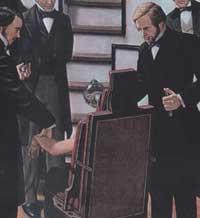
It is not surprising that some doctors cannot sleep during the days before an operation, but, on the other hand, that fear prompted research to obtain anesthesia. They put music, hypnosis (mesmerism), tightened their neck, frozen the body parts, touched their heads and, even if it seems a lie, put cigars from the rectum.
Pipes and other tools
The medicine faces problems of all kinds, so you have always had to consider the most original solutions. In 1848, for example, to help breathing in cases of suffocation, English doctors Snow and Boucher came up with a tube into the patient's trachea.
In 1880 the first intubation without tracheotomy was performed. From then on many applications were discovered to intubation, which had its reflection on technology very fast: The first ‘standard’ piping equipment was designed for 1885. This equipment was conditioned for anesthesia.
Moreover, respirators used for anesthesia improved significantly. The first outstanding tool of this improvement is the Roth Dräger respirator, devised in 1895. In Central Europe it was common for about 50 years. Later, in 1926, the Ombredanne respirator was designed.
More substances
As for inhalation anesthesia, the three main substances were ethylene, divinilether and cyclopropane. Advances have brought with them the appearance of new compounds that have been overcoming the problems posed by the gases used long ago. Cyclopropane, for example, is a very flammable molecule, so keeping this product in the operating room was often more dangerous for the patient than the disease that was intended to be cured.
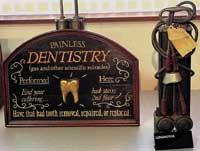
XIX. In the 18th century scientists tried to unravel the relationship between the molecular structure of gases and the anesthetic effect. However, due to the analytical knowledge and human physiology of the time, it was not possible to draw great conclusions. It is a very complex subject, so the best way forward was experimentation, testing.
In these tests the laughter gas was recovered that was almost forgotten for anesthesia. To improve the effect of this gas, start breathing mixed with oxygen. However, this is not the only example of experimentation. In addition to pure substances, doctors began testing mixtures, mixing both gases, liquids and gases.
At the beginning of working with the liquids a new path was opened: large machines for anesthesia began to be designed. In parallel, closed circuits were used to store the anesthetic. In addition to losing fewer amounts of the inhaled substance, they were able to control the doses given to the patient.
The invention of the syringe opened the doors to a time of research on products injected into the veins. A product synthesized by German chemists Emil Fisher and Joseph von Mering of barbituric acid was tested in 1904. This barbital had the right properties to cause the dream of the original acid. Barbital is the ‘oldest member’ of the barbiturate family; thereafter the family grew and there are now hundreds of compounds. The barbiturate family expanded very quickly.
Local anesthesia
In many ancient indigenous peoples of South America the consequences of the chewing of the coca plant were known. Coca spread throughout the world, discovering and chemically isolating the alkaloid, cocaine, which gives it special properties. It was achieved by the German Albert Niemann around 1860.
At this time, cocaine was considered a risk-free drug. It was tested in many experiments. At an ophthalmology congress in 1885, Austrian physician Carl Koller exposed the local anesthesia caused by cocaine.
This substance was very successful in treating the eye, ear, and throat. But its use was not limited to that; American James Corning injected cocaine into a dog into the spinal cord and anesthesia affected the legs.
A great help
As with other fields, the study of anesthesia spread noticeably during the 20th century. In the 20th century. In that century it became the specialty of medicine. It has much to do with many other fields and the mechanism of action of anesthesia remains unknown.
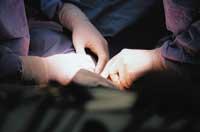
Anesthesia is a complement to physiology research and surgery. Perhaps he has not always been given the importance he deserves. For example, it is often said that the discovery of antibiotics is the most important step in medicine (and science). But there are several reasons to consider other views. Given the resistance of bacteria, the ability of antibiotics is now questioned. In addition, another thing that makes this claim debatable is anesthesia. Although it does not save lives live, since the beginning of modern medicine has been essential.
According to the man of old who could not control nature, pain was sent by the gods, so any attempt against it was useless (however, many attempts were made to travel that opposite way). But that opinion was not the XIX. From the 20th century it was very sustainable. Immediately after finding the first anesthetic effect, the idea of divine desire was revised.
Modern science considers pain as a trick of nature, a way of response of the body to avoid great damage and, as we know, superable. And on the other hand, that overcoming is essential. Dentists, for example, will open their mouths, yes, but always with the help of that invention, right?
Laughter Gas
In 1800, the English chemist Humphrey Davy experimented with nitrous oxide. From one experiment he deduced the composition of the gas and, in another, inhaled. He realizes its anesthetic effect and describes this experiment in a specialized journal.
The discovery of Davy did not have much diffusion, but nitrous oxide was the XIX. The youth of the twentieth century used it as drugs in the parishes. The gas, inhaled, provokes the desire to laugh, so it was called ‘laughter gas’.
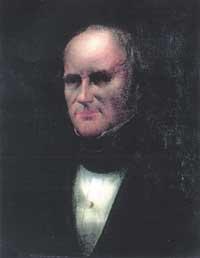
Although he did not see that he could have application in medicine, laughter gas was used in public exhibitions. During such a demonstration, American dentist Horace Wells thought to donate gas to his patients. On December 10, 1844, Wells and his wife attended an exhibition by physician Gardner Quincy Colton, the most prestigious physician who at that time publicly showed the effects of gas. Colton anesthetized a volunteer spectator, the shopkeeper Samuel Cooley, who injured his knee without feeling pain.
The next day, Wells tested the gas with himself: John M after being anesthetized. The dentist Riggs pulled out a skewer while Colton and Cooley were witnesses. In the coming weeks he used gas about fifteen times successfully. Wells, fascinated, organized an exhibition at the Massachusetts hospital, but during the extraction of a skewer the patient shouted and the demonstration failed. The defeat completely depressed Wells, abandoned medicine and withdrew to Paris.
William T. G. Morton was looking for any other substance that could produce anesthesia and chemist James Jackson proposed diethylene. Before, ether was used for similar experiments. Morton, after tests, removed a young man with a tumor under the influence of ether from the Massachusetts hospital.
It was October 16, 1846, date that has been considered as ‘date of birth’ of anesthesia. Within a year, the use of ether spread throughout the world. This year, for example, anesthesia was first used in the battle zone during the U.S.-Mexico war.
Wells or Morton? What was the true inventor of anesthesia? The controversy arose and Jackson and others got into that debate. After all, all had merit in their just measure. But the debate had serious consequences for all. Horace Wells committed suicide in 1848 (of course, after being anesthetized), William Morton died stressed and without money, and James Jackson went crazy.
Chloroform and womenIn the UK, from 1847 chloroform began to be used. Application of this substance James Y. It was promoted by the Scottish physician Simpson. The ether suffers a bad odor and also irritates the bronchi of the patient. Simpson and his companions ensure chloroform inhalation and anesthetic action. Simpson was an obstetrician and began giving chloroform to the women who left. This caused him other problems. The Calvinist church was anti-anesthesia, for in the Bible, Beginning III, paragraph 16 was clearly written: “When you become pregnant, you will suffer pain and have your children in pain; laughter will push your husband, who will be the main.” But the Scottish physician opposed an argument taken from the same book. Home II, paragraph 21, where it says: “Then the Lord of God immersed man in a lethargy. When he slept, he took off a rib that filled the hollow of the bone with flesh.” The controversy ended with a surprise. Doctor John Snow anesthetized Queen Victoria of England, his eighth son, Edward VII. the birth. Friend of Snow Simpson, he helped expand some advances in medicine of the time. The joy of the queen was evident; after childbirth, she silenced the clergy and appointed Simpson sir. During these years two other inventions of great importance were unveiled: In 1851, the syringe of the French Charles Gabriel Pravaz and, in 1854, the pure metallic needle of Wood. Despite the simplicity of its tools, medicine underwent numerous changes. |
Buletina
Bidali zure helbide elektronikoa eta jaso asteroko buletina zure sarrera-ontzian










